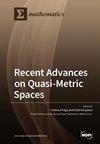Mathematical Formulations for Predicting Pressure Drop in Solid–Liquid Slurry Flow through a Straight Pipe Using Computational Modeling
IF 2.2
3区 数学
Q1 MATHEMATICS
引用次数: 0
Abstract
The study establishes two mathematical formulations to predict the pressure drop in a solid–liquid slurry flowing through a straight pipe. Employing the Eulerian–Eulerian RNG k-ε model, the computational investigation uses water as the carrier fluid and glass beads as solid particles. The analysis spans various particle sizes (d50 = 75–175 μm), volumetric concentrations (Cvf = 10–50%), and velocities (Vm = 1–5 m/s). The first model, developed using the MATLAB curve-fitting tool, is complemented by a second empirical equation derived through non-polynomial mathematical formulation. Results from both models are validated against existing experimental and computational data, demonstrating accurate predictions for d50 = 75–175 µm particles within a Reynolds number range of 20,000 ≤ Re ≤ 320,000.利用计算建模预测固液浆液流经直管时压降的数学公式
该研究建立了两种数学公式来预测流经直管的固液浆液的压降。计算研究采用欧拉-欧拉 RNG k-ε 模型,以水为载液,玻璃珠为固体颗粒。分析跨越了各种颗粒尺寸(d50 = 75-175 μm)、体积浓度(Cvf = 10-50%)和速度(Vm = 1-5 m/s)。第一个模型是利用 MATLAB 曲线拟合工具开发的,第二个模型是通过非多项式数学公式推导出的经验方程的补充。两个模型的结果都与现有的实验和计算数据进行了验证,在雷诺数 20,000 ≤ Re ≤ 320,000 的范围内对 d50 = 75-175 µm 的颗粒进行了精确预测。
本文章由计算机程序翻译,如有差异,请以英文原文为准。
求助全文
约1分钟内获得全文
求助全文
来源期刊

Mathematics
Mathematics-General Mathematics
CiteScore
4.00
自引率
16.70%
发文量
4032
审稿时长
21.9 days
期刊介绍:
Mathematics (ISSN 2227-7390) is an international, open access journal which provides an advanced forum for studies related to mathematical sciences. It devotes exclusively to the publication of high-quality reviews, regular research papers and short communications in all areas of pure and applied mathematics. Mathematics also publishes timely and thorough survey articles on current trends, new theoretical techniques, novel ideas and new mathematical tools in different branches of mathematics.
 求助内容:
求助内容: 应助结果提醒方式:
应助结果提醒方式:


